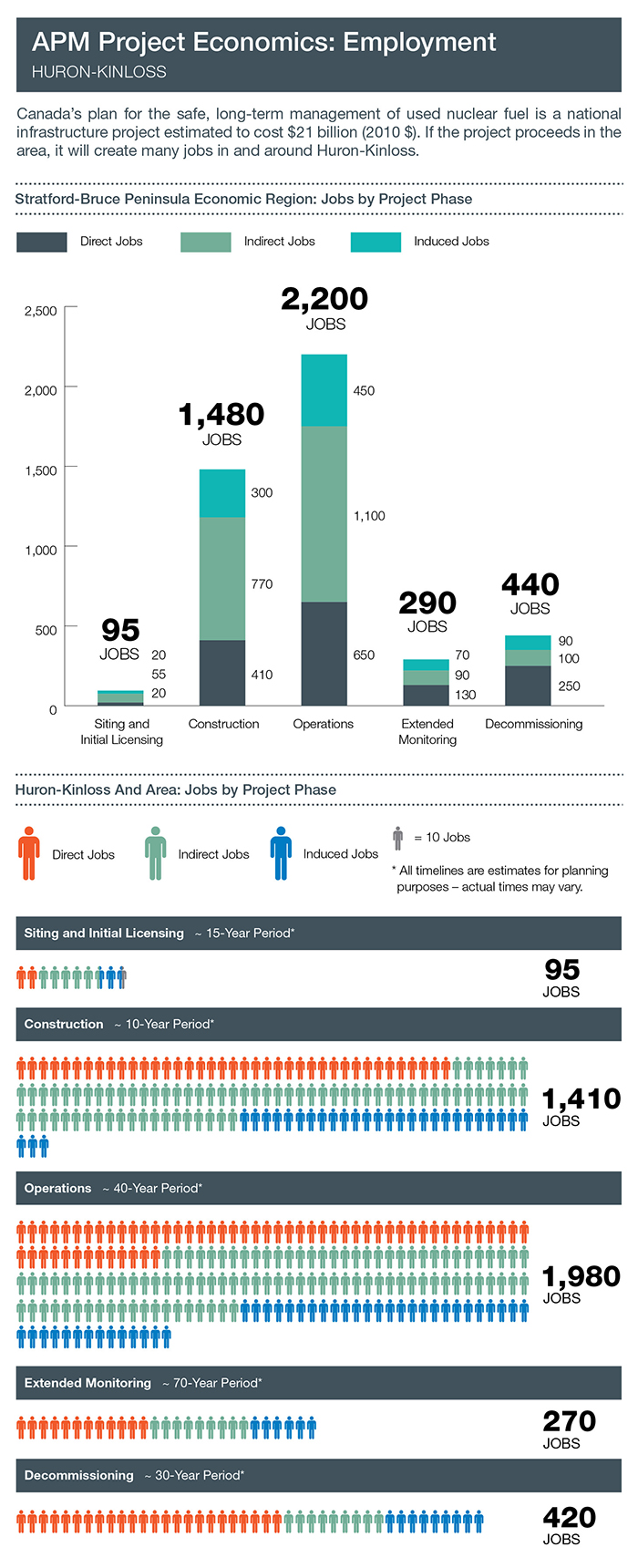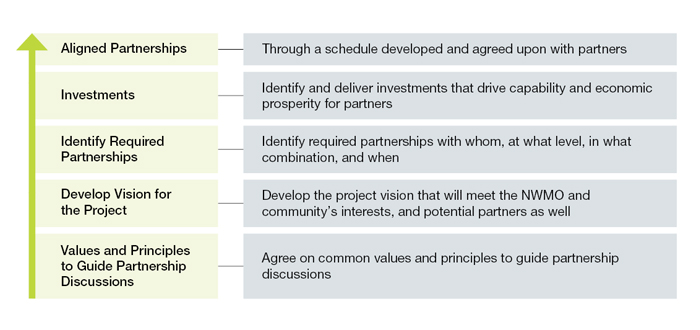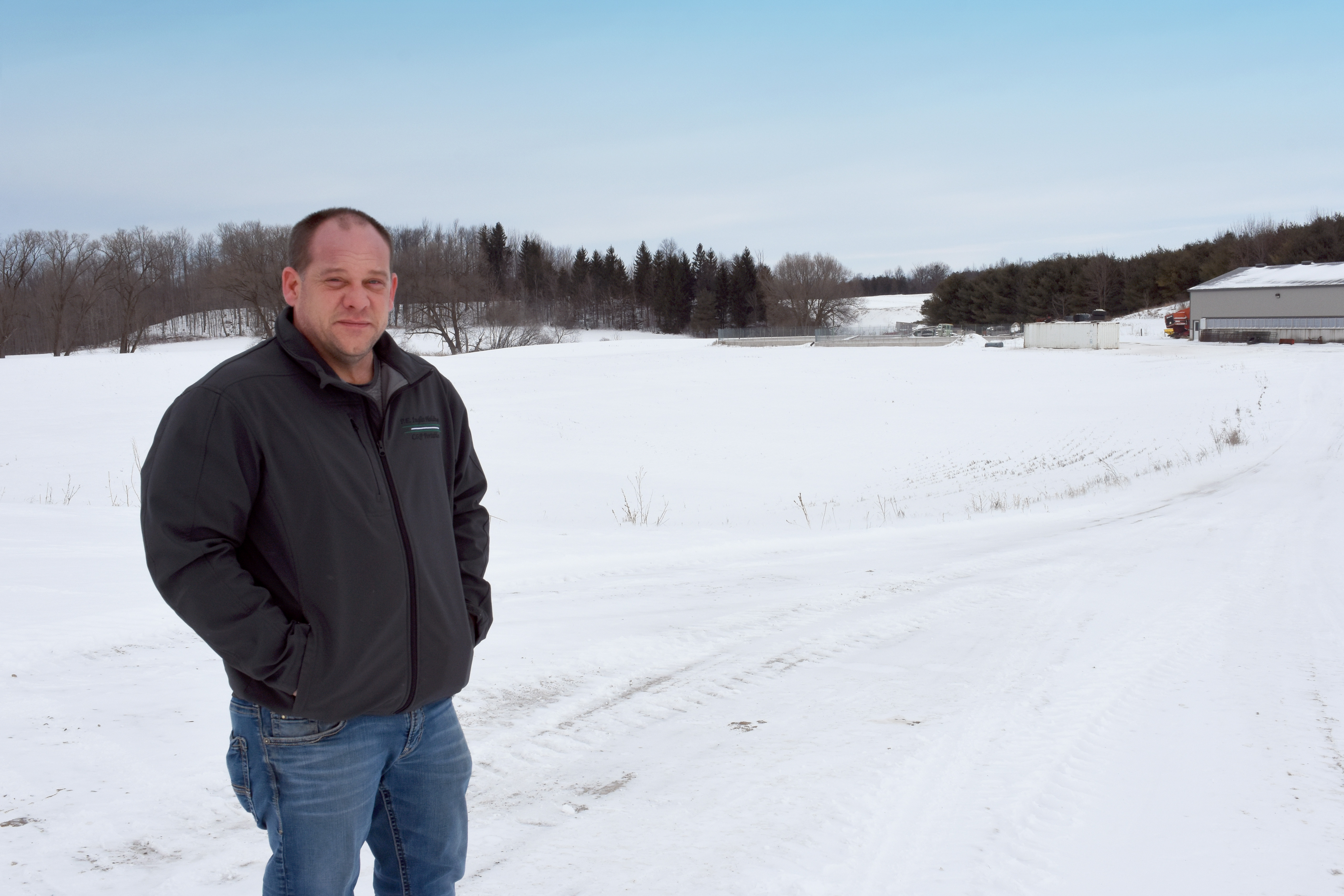Huron-Kinloss
Overview
In 2020, after several years of progressively more detailed study and engagement, we concluded that the community of Huron-Kinloss will not be considered a potential host for the project. However, as a neighbour to South Bruce, the community will continue to play a role as activities there continue.
Canada's plan for the safe, long-term management of used nuclear fuel will only move forward in any area with interested communities, along with First Nation, Métis and surrounding communities, working in partnership to implement it.
Information detailing work we completed in Huron-Kinloss through steps one to three of the site selection process is available below.
Step 1: The NWMO Initiates the Process
The process began with a broad program to provide information, answer questions and build awareness about the project. Awareness-building activities are designed to continue throughout the site selection process.
In Step 1, we provided general information to those who requested it. We began assessment activities in Step 2: Initial Screening only after individual communities formally expressed an interest in learning more.
Step 2: Initial Screening
In April 2012, Huron-Kinloss' Mayor and Council passed a resolution requesting an initial screening of the community's potential suitability to host the project. This screening took us about three months to complete and involved a review based on readily available information about the geology of the community and vicinity.
We encouraged communities that passed the initial screening to begin learning more about the project. We provided an initial briefing and invited representatives to take a tour of an interim storage facility for used nuclear fuel. We also encouraged communities to meet with the Canadian Nuclear Safety Commission to learn about the regulatory framework that will govern the project.
Huron-Kinloss' initial screening was completed in August 2012. It did not identify any obvious conditions that would exclude the Huron-Kinloss area from further consideration in the site selection process.
Resources:
Step 3: Phase 1 - Desktop Studies and Engagement
In November 2012, Huron-Kinloss' Mayor and Council passed a resolution asking the NWMO to initiate a Preliminary Assessment of the community's potential suitability to host the project.
In December 2014, we completed the first phase of Preliminary Assessment (Step 3: Phase 1) of the site selection process in collaboration with Huron-Kinloss.
This phase involved:
- Desktop studies that explored the potential to find a site that can safely and securely contain and isolate used nuclear fuel; and
- Community learning and dialogue activities to build understanding about the project and to explore its potential to align with the community's long-term vision.
Based on studies to date, the community appeared to have strong potential for meeting strict safety and geotechnical requirements, and for the project to align with its long-term vision. The studies also identified a number of uncertainties to be further explored through more detailed study.
Resources:
- Summary of December 2014 Phase 1 Decisions
- Integrated Preliminary Assessment Report
- Community Profile
- Phase 1 Geoscientific Desktop Preliminary Assessment of Potential Suitability for Siting a Deep Geological Repository
- Phase 1 Geoscientific Desktop Preliminary Assessment, Terrain and Remote Sensing Study
- Geoscientific Desktop Preliminary Assessment, Processing and Interpretation of Borehole Geophysical Log and 2D Seismic Data
- Geoscientific Desktop Preliminary Assessment, Processing and Interpretation of Geophysical Data
- Phase 1 Desktop Assessment, Environment Report
- Preliminary Community Well-Being Assessment
Step 3: Phase 2 - Field Studies and Engagement
Work in this phase began with initial studies such as geophysical and environmental surveys to further assess potential suitability.
Details from completed studies are published below.
Project Economics: Employment
To help understand the project's economic effects in potential siting areas, we developed models that provided initial estimates.
We have committed to implementing the project in a way that fosters well-being as defined by the people who live in the area. We continue to learn from communities about the many dimensions of well-being that are important to them. Economics is just one aspect.
The project will create employment that includes:
- Direct Jobs: Jobs at or near the repository site, including skilled and semi-skilled employment during construction and operations
- Indirect Jobs: Jobs created by suppliers and contractors working on the project, such as food catering, accommodation, transportation, and equipment
- Induced Jobs: Jobs created in retail and professional services by expenditures of people employed in direct and indirect jobs
Resources:
Exploring Partnerships
The NWMO and communities are involved in detailed discussions on how to advance learning and build the sustainable partnerships that would be required to support the implementation of Canada’s plan for the safe, long-term management of used nuclear fuel.
The NWMO has outlined a multi-step road map to guide these partnership discussions, which focuses on exploring potential to advance the project in partnership with people in the area, as well as puts in place a framework to implement the project if a preferred site were identified in the area.
Road map to partnership (2017-2022)
Huron-Kinloss identified values and principles to guide discussions with the NWMO to explore partnership and to consider the project in more detail. These values and principles, and the engagement activities that led to their development, are described in the summary report (Guiding principles for exploring partnership – Community conversations update) below.
Resources:
Planning Initial Borehole Drilling and Testing
The focus of geoscientific studies in Huron-Kinloss was to determine if the rock in the area had the potential to satisfy our safety requirements for a deep geological repository for the long-term management of Canada’s used nuclear fuel.
Geoscientific studies conducted to date involved desktop studies, which make use of publicly available information about the geology of the area. The NWMO and the community also worked together to identify a potential location for an initial research borehole in Huron-Kinloss to further understand the general geology of the community. The location identified was on municipal land and the borehole would have been for research purposes only. It was not expected to be a repository site.
The drilling of the initial research borehole, originally planned for 2017, was delayed. However, geoscientific assessments to date indicate that the geology in the area has the potential to meet the requirements of the project. The NWMO had sufficient confidence to proceed with next steps to advance the site selection process.
Discussions were underway to advance learning and build a foundation for strong partnerships in the area. We also considered how to identify potentially suitable lands for the project.
Borehole drilling is still required to advance and confirm our understanding of general geology and potential repository areas.
Resources:
The Land Access Process
A key part of the selection process is studying and identifying a site that can safely house the underground repository and its surface-level facilities. Part of that work requires us to assemble and access sufficient land to complete our studies, which could include borehole drilling, environmental monitoring and other site investigation work such as Indigenous cultural verification.
In Huron-Kinloss and South Bruce, the NWMO sought to sign agreements to access sufficient land in order to complete those studies. This was referred to as the Land Access Process, initiated in May 2019.
In January 2020, the NWMO signed agreements with landowners in South Bruce, Ont., that will allow sufficient access to land for studies at a potential deep geological repository location. Similar land is already available to us in the Ignace area.
To learn more about the Land Access Process, please read The Land Access Process: Next steps in Huron-Kinloss and South Bruce.
Resources:
2019-20 Assessment Update
In 2019, we announced that two areas would continue in the site selection process: either Huron-Kinloss or South Bruce, and the Ignace area. In Huron-Kinloss and South Bruce, one community would move forward once a potential repository site was located through an ongoing process with local landowners.
In January 2020, the NWMO signed agreements with landowners in South Bruce, Ont., that allow sufficient access to land for studies at a potential deep geological repository location. It was also concluded that the Township of Huron-Kinloss, Ont., will no longer be considered a potential host for the project; however, as a neighbour to South Bruce, the community will continue to play a role as activities continue.
This decision followed several years of progressively more detailed study and engagement.
Resources:
2019 Community Surveys
In September 2019, the NWMO initiated community surveys in Huron-Kinloss to better understand and improve the way we communicate and engage with the public. The surveys were conducted by an independent Canadian research firm on behalf of the NWMO, and were designed to determine how communities would like to receive information during the site selection process.
Resources:
Partnership Working Group
The Partnership Working group included municipal and NWMO representatives, with the purpose to develop concepts and plans for potential partnership. It was a next step following the completion of the Partnership Roadmap between Huron-Kinloss and the NWMO, where Huron-Kinloss worked with its community to develop a set of values and principles to guide further work with the NWMO.
The group reported to the Huron-Kinloss Council and shared developments with the Community Liaison Committee.
Topics of the Partnership Working Group included, but were not limited to:
- Requirements and capabilities needed in order to plan and prepare for the project
- Needs associated with informing, learning and responding to interests in the community and area
- Building understanding of project needs, flexibilities, opportunities and constraints
- Economic growth and potential for development in the community and region
- Building and assessing willingness and support
- Building and ensuring broad confidence in safety



